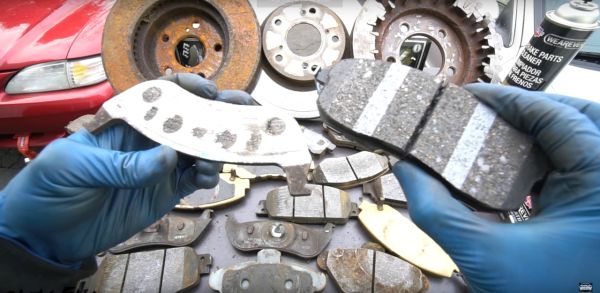
Is your vehicle plagued by the persistent issue of brake squealing? Over time, various components of the braking system wear down, leading to unsettling noises. Here are the six most prevalent reasons behind this problem, along with effective solutions.
- Worn Brake Pads or Discs Certain brake pads are equipped with a small metal part that serves as an indicator. When the pads become excessively worn, this part starts rubbing against the disc, producing a distinctive high-pitched noise. This warns drivers that it’s time for replacement.
Ignoring this warning can lead to pads being worn down to the metal, which is avoidable considering that pad replacement is relatively straightforward and budget-friendly. Failing to address this could result in severe damage to the disc itself.
- Rust on Brake Discs During driving, dirt and rust tend to accumulate on the edges of brake discs. Even a thin layer can contribute to annoying noise. The solution is simple: use sandpaper to clean the problematic areas.
However, rust may also affect the actual friction surface, especially if the car is only used sporadically. This is a greater concern during damp months, as rust forms quickly on discs. You might notice this while washing your vehicle, but a thin layer is usually harmless and can be easily sanded off.
- Debris Lodged Between Brake Pads and Discs Vehicles face heavy contamination, particularly during winter. The combination of road salt, gravel, water, and dust doesn’t bode well for technical components. Regular brake checks are wise. When larger debris gets trapped between the pad and disc, it can lead to both noise and uneven wear on friction surfaces. It’s strongly recommended to inspect and clean the brakes, addressing any debris promptly.
- Worn Brake Pad Mountings Brake pads move toward and away from the disc during operation. Despite the minimal span, this motion can still generate an unpleasant noise due to rust affecting not only pads and discs but other brake components as well.
Rust can accumulate where the pad contacts the caliper, resulting in a squeaky noise. Fortunately, the solution is straightforward – thoroughly clean the specific area. Further protect the friction surface by generously applying copper-based lubricant.
- Insufficient Lubrication of Moving Parts This issue is interconnected with the previous point. Moving components that accumulate rust or debris over time should be cleaned and lubricated after cleaning. This doesn’t refer to the friction surface of pads and discs but rather the mentioned pad mountings.
Deteriorated brake performance and unsettling noise may also be attributed to guide pins. Although protected by rubber boots, they can still accumulate debris. Regular cleaning and lubrication of these pins contribute to proper brake system functionality and mitigate noise issues.
- Damaged Dust Shield
The dust shield safeguards brake discs from debris, preventing contaminants from entering. Unfortunately, it’s often made of thin and flexible metal, prone to bending during careless driving. When excessively damaged, it might start touching the rotating disc, causing an annoying noise. Fortunately, a simple solution exists: gently straighten the shield using a hammer or pliers.
Another dust-related concern arises if a stone gets lodged in the shield. Over time, this stone can permanently scratch the disc. Should you encounter this problem, removing the debris will restore your brakes to optimal condition.